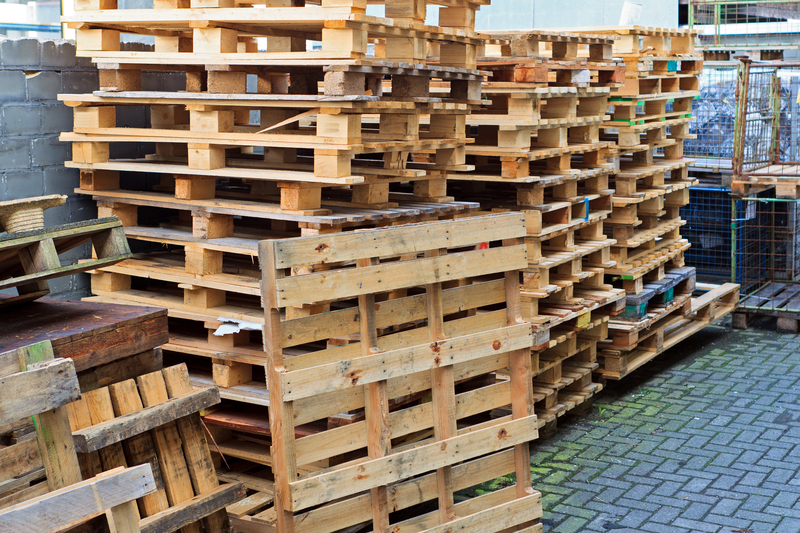Step-by-step Guide to Lowering Your Household Waste Impact
As we strive to adopt more sustainable lifestyles, **reducing household waste** has become a key practice for environmental stewardship. Every day, families contribute to the global waste problem, but small changes can make a big difference. This comprehensive guide offers a step-by-step approach to minimizing household waste, helping you cut down what you send to landfills, save money, and make your home more eco-friendly.

Why Is Lowering Household Waste Important?
Before diving into the actionable steps, it's crucial to understand why reducing your household waste footprint matters:
- Minimizes environmental impact: Landfill waste emits greenhouse gases and contributes to pollution.
- Conserves resources: Less waste means fewer resources are needed to produce new goods.
- Saves money: Lowering waste can reduce household expenses on disposables and utilities.
- Promotes health: Many sustainable choices reduce exposure to chemicals and improve well-being.
Step 1: Assess Your Household Waste
Begin your journey to reducing waste at home by understanding what you throw away. Conduct a waste audit:
- Track your trash. For a week, observe what goes into your garbage bin.
- Sort and categorize. Separate waste into food scraps, paper, plastics, glass, metals, and non-recyclables.
- Analyze patterns. Are you throwing out a lot of single-use packaging or food?
This process will help you identify the biggest sources of waste and prioritize actions to make the most impactful changes.
Step 2: Implement the 5Rs of Waste Management
The renowned 5Rs -- Refuse, Reduce, Reuse, Recycle, and Rot -- serve as the foundation for lowering household waste impact.
1. Refuse What You Don't Need
- Say no to freebies: Politely decline unnecessary items, such as promotional pens or plastic bags.
- Avoid single-use products: Switch to reusable water bottles, coffee cups, and shopping bags.
- Opt for minimal packaging: Choose products with little or no packaging, or buy in bulk to reduce waste.
2. Reduce Your Consumption
- Plan your shopping: Make shopping lists to avoid impulse buys and food waste.
- Embrace minimalist habits: Purchase only what you truly need.
- Borrow instead of buying: Use libraries or tool lending programs instead of buying new.
3. Reuse and Repurpose
- Repurpose containers: Use glass jars and tins for storage.
- Repair before replacing: Mend clothes, fix appliances, and upcycle old furniture.
- Shop second-hand: Buy from thrift stores, garage sales, or swap with friends.
4. Recycle Responsibly
- Understand local recycling rules: Familiarize yourself with what's accepted in your curbside program.
- Clean recyclables: Rinse food containers to improve recyclability and avoid contamination.
- Recycle electronics and batteries: Find designated drop-off points for e-waste and hazardous materials.
5. Rot (Compost) Organic Waste
- Compost at home: Turn food scraps and yard waste into nutrient-rich compost for plants.
- Use municipal programs: Participate in community composting if available.
Step 3: Reduce Food Waste
Food waste is a leading contributor to household garbage and climate change. Lower your food waste impact at home with these tips:
- Meal planning: Plan your meals for the week to use all perishable ingredients.
- Proper storage: Store fruits, vegetables, and leftovers correctly to extend freshness.
- Use leftovers: Reinvent meals using surplus food or freeze for later.
- Compost peels and scraps: Instead of tossing them, turn food waste into compost.
Step 4: Shift to Reusable Products
Make the switch from disposables to reusables to fundamentally lower your household waste generation:
- Reusable bags and containers: Bring your own bags, containers, and produce bags to the store.
- Cloth napkins and towels: Replace paper towels with washable fabric alternatives.
- Rechargeable batteries: Opt for batteries you can recharge over and over.
- Stainless steel straws and cutlery: Carry your own when eating out.
Step 5: Choose Sustainable Packaging and Products
- Eco-friendly packaging: Choose products packaged in glass, paper, or biodegradable materials over plastic.
- Buy in bulk: Purchase dry goods and household items in larger quantities to minimize packaging.
- Support zero-waste stores: Visit shops that let you refill your own containers.
Step 6: Set Up Effective Home Sorting Systems
A key to lowering household garbage output is to make sorting simple and accessible for your entire family:
- Designate bins: Use clearly labeled, separate bins for recyclables, compostables, and landfill waste.
- Kitchen convenience: Place containers strategically in kitchens, bathrooms, and offices for easy sorting.
- Educate family members: Ensure everyone knows what goes where and why it matters.
Step 7: Single Out Problem Waste Items
Certain items are especially problematic because they are not widely recyclable or decompose very slowly. Proactively tackle these:
- Plastic wrap, bags, and films: Seek out store drop-offs or avoid them where possible.
- Polystyrene foam (Styrofoam): Avoid products packaged in foam as it is not typically recyclable.
- Hazardous waste: Properly dispose of batteries, chemicals, and electronics at specialized facilities.
- Single-use coffee pods and utensils: Choose reusable or recyclable options.
Step 8: Involve Your Household and Community
Waste reduction is more effective and satisfying when everyone participates. Encourage involvement by:
- Making waste reduction a family goal: Set targets and celebrate milestones together.
- Teaching kids sustainable habits: Explain the reasons behind sorting and reusing.
- Joining or starting local initiatives: Participate in or organize community clean-ups, swap meets, or composting groups.
Step 9: Track Progress and Fine-tune
Regularly monitor how much waste you throw out and look for ongoing improvements:
- Conduct periodic waste audits: Revisit your trash to see if your efforts are working.
- Try new strategies: Test different waste-free products and methods to see what best fits your household.
- Share and learn: Discuss tips with neighbors or join zero-waste online communities.
Step 10: Celebrate Your Impact
Lowering your household waste production deserves recognition:
- Share successes: Inspire others by talking about your achievements on social media or within your community.
- Reward your family: Treat yourselves to a favorite activity as a reward for hitting goals.

Additional Creative Tips for Reducing Household Waste
- DIY cleaning products: Make cleaners at home to reduce chemicals and packaging.
- Opt for digital receipts and billing: Minimize paper use by going electronic wherever possible.
- Grow your own: Plant herbs and vegetables to reduce packaging and food waste.
- Be a smart composter: Learn what can and can't go into your compost bin for maximum benefit.
- Upcycle creatively: Turn old clothes into rags, tote bags, or craft supplies instead of throwing them away.
Remember: Lowering household waste isn't about perfection, but progress
Small changes add up! Even if your home doesn't go completely zero waste, every action you take towards reducing household waste helps build a cleaner, healthier planet for everyone. Start today with just one step from this guide--over time, your impact will grow.
Frequently Asked Questions About Reducing Household Waste
- What is the most effective way to lower household waste?
The best results come from combining multiple strategies: refusing single-use items, composting organic matter, recycling responsibly, and choosing reusables over disposables. - What items are most important to keep out of landfill?
Electronics, batteries, hazardous chemicals, and certain plastics should always be diverted from regular trash due to their environmental harm. - How do I get my family on board with waste reduction?
Communicate the benefits, involve everyone in the process, set shared goals, and make it fun and easy to take part. - Can I really make a difference as one household?
Yes, individual action matters. Plus, you'll inspire others to follow your example for a collective impact.
Conclusion: Your Roadmap to a Low-waste Household
With growing awareness of our environmental footprint, lowering household waste is both achievable and essential. By following this step-by-step guide, you can systematically reduce your home's waste, conserve resources, protect the environment, and often save money along the way. Whether you're just starting or are looking to go further, remember: Every effort counts! Set your own pace, involve your loved ones, and celebrate each step toward a waste-wise lifestyle.
Start today--your small changes will lead to a cleaner, greener future for generations to come.